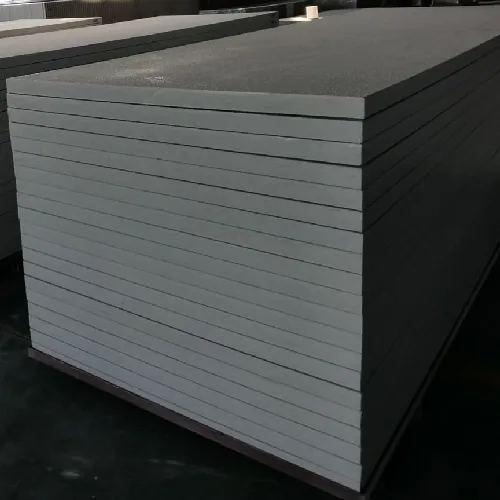loading...
- No. 9, Xingyuan South Street, Dongwaihuan Road, Zaoqiang County, Hengshui, Hebei, China
- admin@zjcomposites.com
- +86 15097380338
- Welcome to visit our website!
frp u channel
Exploring the Versatility of FRP U Channels
In the realm of construction materials and structural engineering, the introduction of Fiber Reinforced Polymer (FRP) has revolutionized various applications due to its unique properties and advantages. Among the diverse forms of FRP products, the FRP U channel stands out for its strength, durability, and flexibility. This article delves into the characteristics, benefits, and applications of FRP U channels, shedding light on why they are becoming an increasingly popular choice in modern construction and industrial environments.
What is an FRP U Channel?
An FRP U channel is a channel-shaped structural element made from fiber-reinforced polymer composites. These materials typically consist of a polymer matrix reinforced with fibers, such as glass, carbon, or aramid, which enhance the material's tensile strength, stiffness, and resistance to environmental factors. The U-shaped design allows for efficient load distribution, making it an ideal candidate for various structural and architectural applications.
Key Properties of FRP U Channels
1. High Strength-to-Weight Ratio One of the most significant advantages of FRP U channels is their high strength-to-weight ratio. Compared to traditional materials such as steel or aluminum, FRP offers comparable or superior strength with a fraction of the weight, enabling easier handling and installation.
2. Corrosion Resistance FRP materials are inherently resistant to corrosion, making them suitable for applications in harsh environments, including chemical processing plants, marine settings, and wastewater treatment facilities. This resistance extends the lifespan of structures using FRP U channels, reducing maintenance costs and improving the overall sustainability of projects.
3. Thermal and Electrical Insulation Unlike metals, FRP does not conduct electricity or heat, making it an excellent choice for applications where thermal or electrical insulation is essential. This characteristic is crucial in electrical enclosures, construction in cold climates, and applications requiring thermal management.
4. Design Flexibility FRP U channels can be fabricated in various shapes, sizes, and colors, allowing architects and engineers to incorporate them into a wide range of design concepts. This versatility helps in creating aesthetically pleasing structures without compromising on strength and durability.
frp u channel

Applications of FRP U Channels
The unique properties of FRP U channels make them suitable for a vast array of applications across different industries
1. Construction and Building FRP U channels are often used in building structures, including bridges, walkways, and canopies. Their lightweight nature makes them easier to transport and install, while their strength ensures that they can support significant loads.
2. Industrial Applications In industrial settings, FRP U channels are used for support structures, frames, and racks. Their corrosion resistance makes them ideal for environments where traditional materials would degrade quickly.
3. Marine Applications The marine industry benefits significantly from FRP U channels due to their buoyancy and resistance to saltwater corrosion. They are used in constructing docks, pontoons, and other marine infrastructure.
4. Transportation Projects In transportation, FRP U channels are used for above-ground and below-ground applications, including railway systems and highway barriers, providing strength without adding excess weight.
Conclusion
The FRP U channel is an exemplary product that highlights the advancements in material science and engineering. Its combination of strength, durability, and versatility makes it a preferred choice in several sectors, ranging from construction to transportation and beyond. As the demand for innovative and sustainable building materials continues to grow, FRP U channels are poised to play a pivotal role in shaping the future of infrastructure and industrial development. Embracing such materials not only enhances project efficiency but also contributes to a more sustainable and resilient built environment.
In conclusion, understanding the benefits and applications of FRP U channels is essential for architects, engineers, and construction professionals seeking to enhance the performance and longevity of their projects. With continued advancements in composite technology, the future looks bright for this innovative material.
-
The Rise of FRP Profiles: Strong, Lightweight, and Built to LastNewsJul.14,2025
-
SMC Panel Tanks: A Modern Water Storage Solution for All EnvironmentsNewsJul.14,2025
-
GRP Grating: A Modern Solution for Safe and Durable Access SystemsNewsJul.14,2025
-
Galvanized Steel Water Tanks: Durable, Reliable, and Ready for UseNewsJul.14,2025
-
FRP Mini Mesh Grating: The Safer, Smarter Flooring SolutionNewsJul.14,2025
-
Exploring FRP Vessels: Durable Solutions for Modern Fluid HandlingNewsJul.14,2025
-
GRP Structures: The Future of Lightweight, High-Performance EngineeringNewsJun.20,2025
